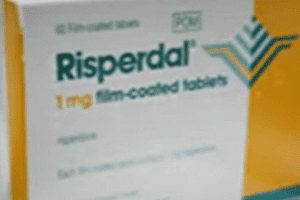
Makers of Risperdal is Responsible for Gynecomastia. After a $70 million verdict in a Risperdal gynecomastia lawsuit in July, Janssen Pharmaceuticals and its parent company Johnson & Johnson may be re-examining their strategy for pending Risperdal lawsuits. The lawsuits allege that the Risperdal is responsible for gynecomastia-the growth of female breasts-in boys and teenage males who […]

Makers of Risperdal is Responsible for Gynecomastia. After a $70 million verdict in a Risperdal gynecomastia lawsuit in July, Janssen Pharmaceuticals and its parent company Johnson & Johnson may be re-examining their strategy for pending Risperdal lawsuits.
The lawsuits allege that the Risperdal is responsible for gynecomastia-the growth of female breasts-in boys and teenage males who take the drug.
The Food and Drug Administration (FDA) originally approved Risperdal (risperidone) for treating schizophrenia and bipolar disorder in adult patients. But the drug maker made repeated attempts to expand the approval to allow the drug to be prescribed to children and adolescents for behavioral problems and autism. The drug maker also wanted approval for treating older people with dementia. Critics say the evidence shows that many of those uses were not warranted.
Gynecomastia was one of the side effects that concerned the FDA. Boys taking Risperdal can experience increased prolactin levels. Prolactin is the hormone responsible for milk production in women. High levels of prolactin in males can cause the growth of female breast tissue.
Five Risperdal gynecomastia cases have thus far gone to trial. Four of the five cases have resulted in in monetary awards ranging from $500,000 to $2.2 million. One of the strongest pieces of evidence presented in the Risperdal trials is a video deposition by former FDA Commissioner David Kessler, who testified that Janssen and J&J manipulated clinical trial data presented to the FDA to downplay the risk of gynecomastia, Consumer Advocacy News reports.
In their own studies of the risk of gynecomastia, Janssen and J&J found too high a percentage of boys with gynecomastia linked to Risperdal for the FDA to approve its use in children. But the drug companies found a way dilute the data. When boys begin puberty (around 10 years old) prolactin levels in the body naturally increase. This natural increase is rarely high enough cause gynecomastia, but the drug makers nevertheless excluded all boys over the age of ten in their clinical trials from the number of children who developed gynecomastia. The company did not, however, exclude boys 10 and up with gynecomastia from the overall number of participants in the study. To further obscure the risk of gynecomastia, the companies added 103 girls without gynecomastia to the total number of participants.
The actual number of trial participants who had developed gynecomastia was 22 but the companies reported only five, according to Consumer Advocacy News. The number of boys participating in the trial was 489 but the companies reported 592.
The actual rate of gynecomastia reported in the studies was 4.5 percent, but through the inclusion and exclusion of certain participants, Janssen and J&J were able to show a gynecomastia rate of only 0.8 percent. Later studies showed a gynecomastia rate as high as 5.5 percent.
Janssen and J&J used the low rate to reapply to the FDA to gain approval for Risperdal to treat autism in children. The FDA granted the approval in 2006. In 2013, J&J paid $2.2 billion to the U.S. Department of Justice to settle criminal and civil charges that the company illegally marketed Risperdal for use in children prior to FDA approval, and misrepresented the risks.
The personal injury attorneys at Parker Waichman LLP offer free, no-obligation case evaluations. For more information, fill out our online contact form or call 1-800-YOURLAWYER (1-800-968-7529).


